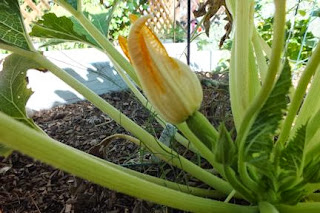One thing about gardens is they are great for experimenting.
You can try different plant companion combinations, different soil mixes,
different containers and methods.
In the last few months, I've departed from the 'rules' of
gardening and engaged in free style planting- planting seeds with no thought to
placement, season or symbiotic relationships. I'm also disregarding my drip
system and spraying the garden beds with a watering wand, soaking the soil and
sometimes the young seedlings.
So, in the spirit of rebellion, I shrugged off the
cautionary tales of tire gardening and embraced the concept of re-using a
usually cast-off product. The studies I've read concern themselves with
shredded tires for ground cover, that the heavy metals leech into the soil.
Well, once the integrity of the tire is destroyed, as in shredded, then yes,
leeching is likely imminent.
But even the Environmental Protection Agency says intact
tires are fine for garden containers, so Bob and I set one up. Now, we'll see
what happens next.
Free Style Gardening Successes
 |
| Zucchini with Flower |
The success of a garden is measured by its harvest, and in
the last couple of seasons, my success has been limited. But I have more hope
for this season, and I think our tire garden will add to that success.
Updating Our Aquaponics and Hydroponics
We're in the process of preparing for the upgrade to our
aquaponics system. We'll add a larger fish tank and an extra grow bed, as well
as reposition the grow beds. It's a long process, but now that the temperatures
no longer rise above the 100 degree mark, we can move along at a quicker pace.
We're also looking at updating our approach to hydroponics. We
have, traditionally, used buckets and plastic containers for our hydroponics
systems, but the systems aren't particularly attractive. If you want
hydroponics at your front entrance, for example, a big orange bucket won't cut
it. So keep a look out for some of our upcoming experiments in updating the
look of hydroponics and of course, for our new aquaponics system.

.JPG)









